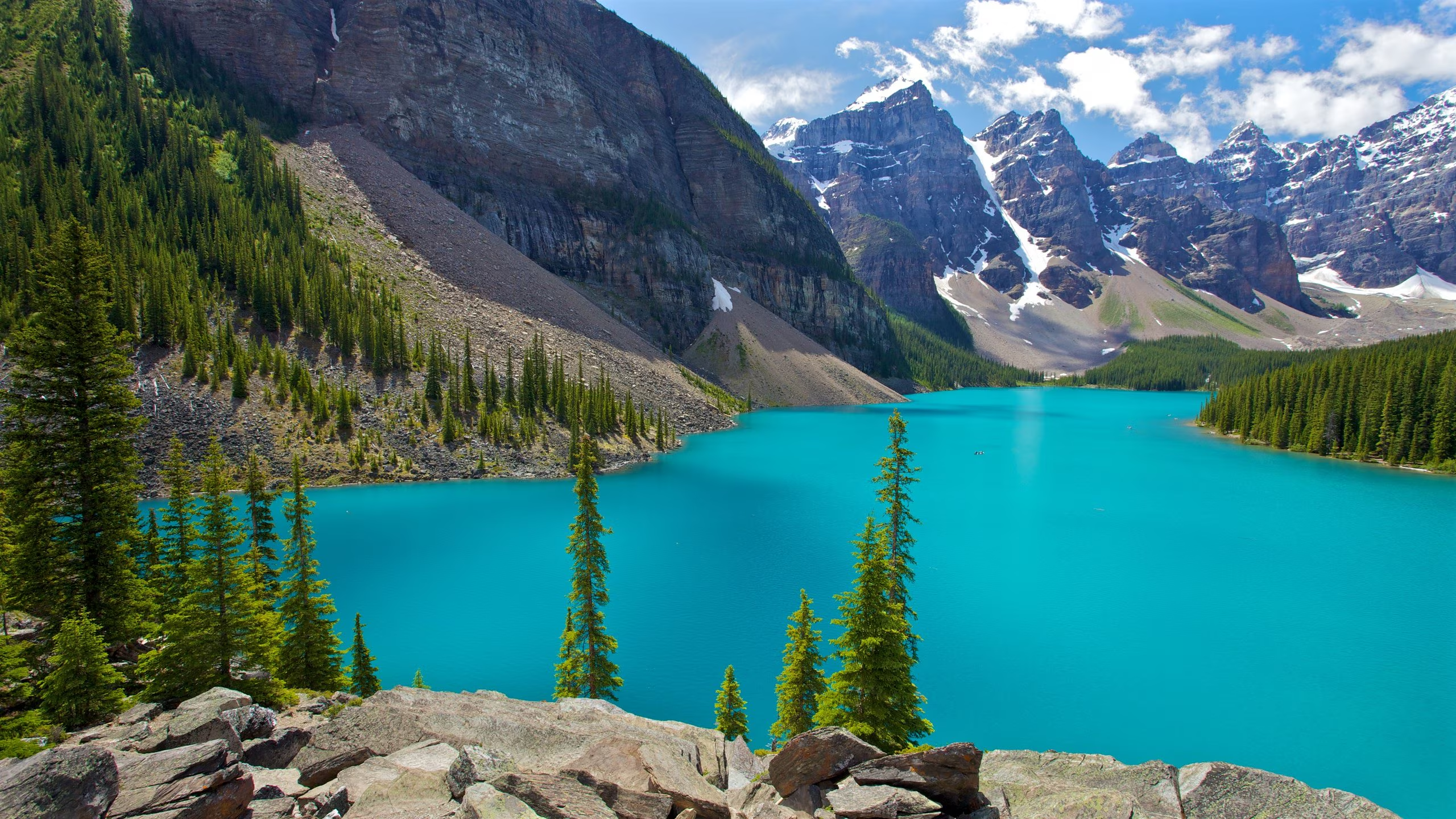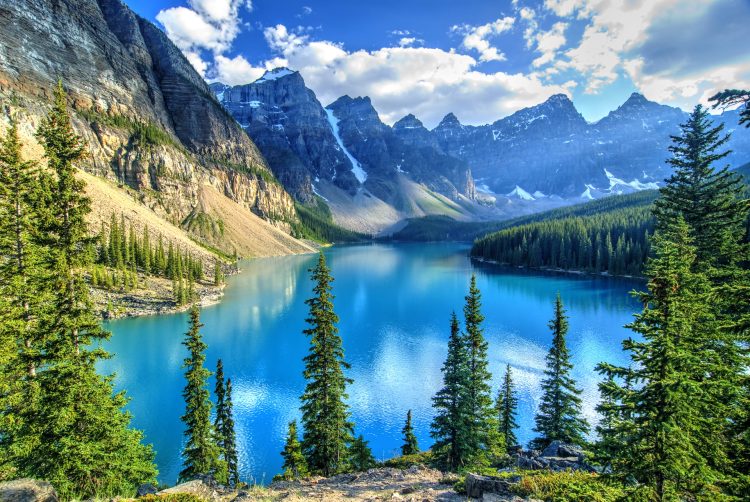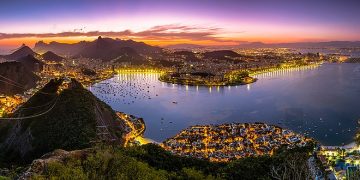Canada, a vast country known for its awe-inspiring landscapes, is home to some of the most stunning natural wonders on the planet. From its towering mountains and endless forests to its crystal-clear lakes and dramatic coastlines, Canada is a haven for nature lovers. While iconic sites like Banff National Park, Niagara Falls, and the Rocky Mountains are well-known, there are also many hidden gems that are just as breathtaking and worth exploring. These lesser-known natural wonders offer a more intimate experience with the country’s diverse and pristine wilderness.
In this article, we’ll take you on a journey through some of Canada’s most hidden natural wonders—places that are off the beaten path but are equally captivating, if not more so, than the more famous landmarks.
1. The Grotto, Bruce Peninsula National Park (Ontario)
Located on the shores of Lake Huron, the Grotto is one of Ontario’s most stunning natural wonders. Tucked away in the Bruce Peninsula National Park, this hidden sea cave features clear turquoise waters and a small beach surrounded by limestone cliffs. The Grotto is accessible via a relatively short hike, but its beauty is worth every step.
Why It’s Special:
The Grotto’s waters are incredibly clear, often reflecting a beautiful blue-green hue, making it look like a tropical oasis in the heart of Canada. The cave itself is accessible by swimming through the cool waters or by wading along the rocky shore. The surrounding area is also home to diverse flora and fauna, making it a great spot for nature walks. During the summer, the Grotto is a popular spot for swimming and cliff jumping, while in the off-season, it offers a peaceful and serene retreat.
2. Nahanni National Park Reserve (Northwest Territories)
Located in the remote northern wilderness of the Northwest Territories, Nahanni National Park Reserve is a UNESCO World Heritage Site that remains one of Canada’s most pristine and unspoiled natural areas. The park is known for its dramatic landscapes, including the majestic Virginia Falls, which is twice the height of Niagara Falls.
Why It’s Special:
The sheer remoteness of Nahanni means that only a few travelers ever experience its wild beauty. Besides the stunning Virginia Falls, the park is home to the rugged, snow-capped Nahanni Mountains, crystal-clear rivers, and deep canyons. It also features hot springs, glaciers, and a variety of wildlife, such as grizzly bears, caribou, and wolves. The park is a paradise for adventurous visitors who want to experience the raw, untamed beauty of Canada’s wilderness through activities like canoeing, hiking, and rafting.
3. The Spotted Lake (British Columbia)
Spotted Lake, located near Osoyoos in British Columbia’s desert region, is a natural phenomenon that has intrigued visitors for generations. The lake is a shallow body of water that contains high concentrations of various minerals, including magnesium sulfate, calcium, and sodium sulfate.
Why It’s Special:
In the summer, when the water evaporates, the lake’s mineral deposits form a series of colorful spots that range from blue to green to yellow. These spots are actually pools of water that have become concentrated with different minerals, creating a striking and almost surreal pattern across the lakebed. The area around the lake is sacred to the Okanagan First Nations people, and while the lake is not always open for swimming, it remains a unique and mesmerizing sight. The combination of natural beauty and cultural significance makes Spotted Lake an exceptional destination.
4. Gros Morne National Park (Newfoundland and Labrador)
Gros Morne National Park, a UNESCO World Heritage Site located in Newfoundland and Labrador, is often overshadowed by the more famous national parks of Canada. However, it is a hidden gem that offers dramatic coastal cliffs, towering fjords, and a diversity of landscapes that range from barren tundra to lush forests.
Why It’s Special:
The park’s unique geological features, including exposed sections of the Earth’s mantle, provide a glimpse into the planet’s past. One of its most famous features is the Tablelands, an area where the Earth’s mantle has been pushed up above the surface, revealing the raw, unweathered rock beneath. Gros Morne also boasts spectacular fjords, including the famous Western Brook Pond, which is accessible by boat. Visitors can explore the park through hiking, kayaking, or simply taking in the stunning views of the ocean, cliffs, and mountains.
5. Tofino, Vancouver Island (British Columbia)
Tofino, located on the west coast of Vancouver Island, is known for its rugged coastline, misty rainforests, and wild beaches. While it has become more popular in recent years, it is still a relatively quiet destination compared to other major tourist spots in Canada.
Why It’s Special:
Tofino is a haven for nature enthusiasts, with stunning beaches like Long Beach, which is part of the Pacific Rim National Park Reserve. The town is also famous for its storm-watching season, when visitors come to witness the powerful Pacific storms crashing against the shoreline. In addition, Tofino is home to the Clayoquot Sound Biosphere Reserve, a UNESCO-designated area that contains one of the largest temperate rainforests in the world. Visitors can explore the area’s wild beaches, go whale watching, or embark on a hiking adventure through the lush forest.

6. The Icefields Parkway (Alberta)
While the Icefields Parkway is one of the most famous drives in Canada, it offers a wealth of lesser-known natural wonders that are waiting to be discovered. This scenic highway runs through the heart of the Canadian Rockies, connecting Jasper National Park with Banff National Park.
Why It’s Special:
Beyond the iconic glaciers and mountains, the Icefields Parkway is dotted with hidden lakes, waterfalls, and wildlife. One of the most beautiful and lesser-known spots is the Peyto Lake, a wolf-shaped lake with striking turquoise waters. Other highlights along the route include the Athabasca Falls, Sunwapta Falls, and the Columbia Icefield, where visitors can walk on a glacier. The parkway is a haven for wildlife, including elk, moose, and bighorn sheep, making it a photographer’s paradise. The breathtaking views, combined with the opportunity to explore quieter, less-traveled areas of the Rockies, make the Icefields Parkway a must-see.
7. Auyuittuq National Park (Nunavut)
Located on Baffin Island in Canada’s far north, Auyuittuq National Park is one of the most remote and rugged parks in the country. Its name, which means “land that never melts” in Inuktitut, is a fitting description of this pristine wilderness, where glaciers, fjords, and towering granite peaks dominate the landscape.
Why It’s Special:
Auyuittuq is a place where few venture, and its dramatic terrain offers an unspoiled wilderness experience. The park features some of the most stunning mountain scenery in the world, with jagged peaks like Mount Asgard and Mount Odin rising high above the Arctic landscape. Visitors can explore the park through trekking, cross-country skiing, or ice climbing, and it’s also home to unique wildlife, including polar bears, arctic foxes, and caribou. The raw beauty of Auyuittuq offers a glimpse into the untouched landscapes of the Canadian Arctic, making it a true hidden gem for those seeking adventure in a remote, untamed environment.
8. Kejimkujik National Park (Nova Scotia)
Kejimkujik National Park, located in Nova Scotia, is one of Canada’s lesser-known national parks, but it is no less beautiful. The park is a mix of forested hills, sparkling lakes, and slow-moving rivers, offering a tranquil retreat for visitors.
Why It’s Special:
Kejimkujik is a designated Dark Sky Preserve, making it one of the best places in Canada to experience stargazing. The park is also home to a variety of wildlife, including deer, beavers, and a wide range of bird species. In addition to its natural beauty, Kejimkujik has cultural significance for the Mi’kmaq people, with ancient petroglyphs carved into rocks by Indigenous peoples centuries ago. Whether you’re hiking along the park’s trails, canoeing on its lakes, or simply relaxing by the water, Kejimkujik offers a serene and immersive nature experience.
9. Mount Assiniboine Provincial Park (British Columbia)
Often referred to as the “Matterhorn of the Rockies,” Mount Assiniboine is located in a remote corner of British Columbia and offers an experience that rivals the more famous parks of the Canadian Rockies. The park is known for its stunning alpine meadows, crystal-clear lakes, and breathtaking mountain views.
Why It’s Special:
One of the highlights of Mount Assiniboine Provincial Park is Lake Magog, an alpine lake surrounded by jagged peaks. The park is accessible by hiking or helicopter, making it a hidden gem for adventure-seekers. The iconic views of Mount Assiniboine towering above the lake are a photographer’s dream. The park is also home to a range of wildlife, including mountain goats, black bears, and peregrine falcons, making it an ideal destination for those looking to connect with the wild side of Canada.
Conclusion: Canada’s Hidden Natural Gems
Canada’s natural beauty extends far beyond the well-trodden tourist routes. From the rugged coastlines of Vancouver Island to the untamed wilderness of the Arctic, there are countless hidden gems waiting to be explored. Whether you’re hiking through remote national parks, gazing at the surreal beauty of mineral-rich lakes, or standing before majestic, unexplored waterfalls, Canada offers some of the most breathtaking and unspoiled landscapes in the world. For those willing to venture off the beaten path, the country’s hidden natural wonders promise unforgettable experiences and a chance to connect with the raw power of nature.





















